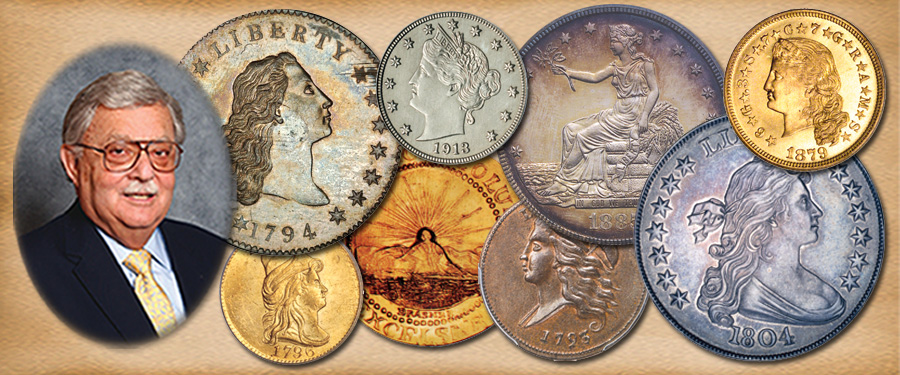
Here I continue my thoughts on rarities, and the factors that affect this important aspect of numismatics.
As noted, true rarity can not be caused by a collector through hoarding or manipulation, although sometimes temporary rarity can be achieved. During the early days of the U.S. Mint rarities came into being due to the absence of precious metals for striking, the desires of depositors who requested specific denominations, and the needs of commerce at a given time. Sometimes nearly the entire mintage would be used intensively in commercial channels while other times coins would be hoarded or exported.
With very few exceptions the Mint does not start out to make a rare or scarce coin; their mission is usually to meet the needs for commerce. In some years only a few of a given coin were struck and other times millions were made. These quantities affected what dates and mintmarks became scarce, also affected by the aforementioned commercial use. When the collecting community learned of scarce issues, demand might rise and eventually cause a coin to become truly rare.
The growth of numismatics and the popularity of a given series or denomination affects the demand side of the equation. For example, after World War II, collecting Morgan silver dollars became more widespread. There were certain dates that were extremely difficult to find (see earlier part of this series about the 1903-0 Morgan dollar). One such date was the 1895 Philadelphia Mint dollar with only 880 Proofs struck and with no circulation strikes ever located. By its very definition, a complete set of Morgan dollars required the purchase of one of these 880 Proofs. In earlier times there were not that many people seeking to acquire a full set of Morgan dollars, so 880 was not such a restrictive number. However, after the middle of the 20th century, when collecting Morgan dollars really took off, the increased demand caused this particular date to become much more of a rarity, despite the fact that there were pretty much the same number available as there had always been. Many Morgan dollar collectors had to limit their collections to circulation strike issues or be satisfied with a mintmarked 1895 coin to represent the date. Had the 1895 Morgan dollar been found in the Treasury releases of silver dollars as the 1903-O was, the rarity would have decreased as opposed to increasing.
In upcoming articles I will discuss many other interesting happenings, hoards that were found, changes in supply and demand and how rarity is affected. All these things illustrate why it is so important to study, read catalogs, study auctions and learn from dealers who are qualified to give answers to questions you may have.





